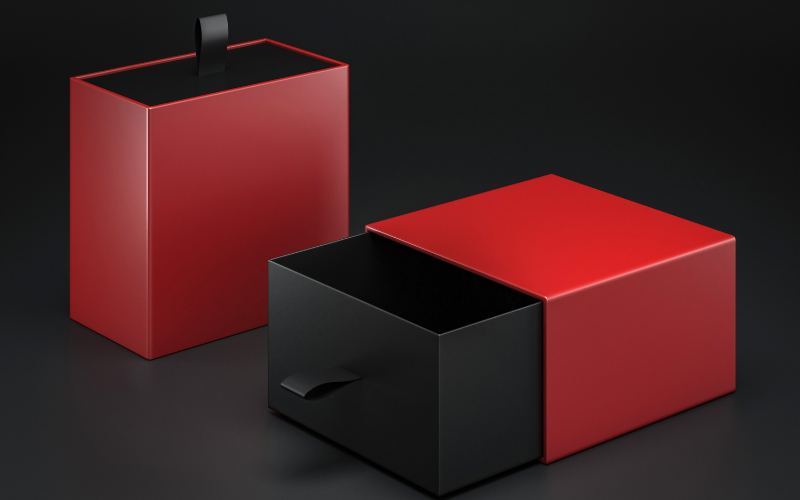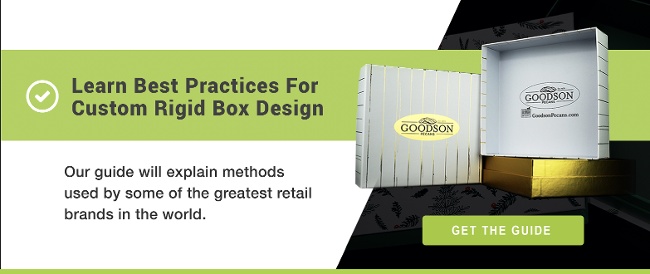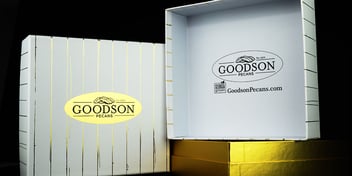5 Issues Affecting Your Rigid Box Packaging
In the world of packaging, rigid boxes have a reputation for durability, elegance, and the ability to enhance product presentation. They are commonly used for high-end retail items, electronics, cosmetics, and more. However, like any packaging solution, rigid boxes are not immune to challenges that can affect their performance and the overall success of your product.
This article will explore five critical issues that can impact your rigid box packaging and highlight how an experienced printing and packaging company can help you overcome them.
5 Problems to Avoid with Rigid Box Packaging
By understanding these five potential pitfalls of using rigid box packaging, you can develop the best product possible for customer satisfaction and loyalty.
1. Quality Control and Consistency
One of the foremost issues affecting rigid box packaging is maintaining consistent quality across a production run. Rigid boxes are known for their premium appearance and any discrepancies in color, printing, or finishing can undermine the perceived value of your product.
Partnering with an experienced printing and packaging company can help address this challenge. A packaging partner will have the necessary expertise, advanced equipment, and quality control processes in place to ensure every box meets your specifications. From color accuracy to precise die-cutting, a reliable packaging company will go to great lengths to maintain consistency throughout the manufacturing process and uphold your brand's image.
2. Sustainability and Environmental Concerns
Sustainability is increasingly important to consumers and regulatory bodies worldwide, particularly when it comes to the environmental impact of packaging materials. Rigid boxes are typically made from materials like paperboard, which can be eco-friendly when sourced responsibly and appropriately recycled.
However, sourcing sustainable materials and ensuring eco-friendly production practices can be complex. Your packaging printing partner should be able to guide you in making environmentally responsible choices for your rigid box packaging, recommending sustainable paperboard options, eco-friendly printing inks, and production processes that minimize waste and energy consumption while maintaining the quality and appeal of your packaging.
3. Cost-Effective Production
Balancing quality and cost-effectiveness is a perpetual challenge for businesses that use rigid box packaging. Creating high-quality rigid boxes can be costly, especially when you factor in materials, printing techniques, and finishing options. Moreover, small-scale production runs may lead to higher unit costs.
Let's touch on a few strategies to keep costs in check:
- Optimizing packaging design to minimize material waste and standardizing box sizes can lead to significant savings.
- Choosing cost-effective yet high-quality printing techniques and finishes, such as digital printing or spot UV coating, can reduce production expenses.
- Collaborating with a packaging company that offers flexible production options, allowing for smaller runs when necessary, can help avoid overstocking and excessive costs.
- As mentioned above, exploring sustainable packaging materials aligns with eco-conscious consumer preferences and can lead to potential cost savings through reduced waste disposal fees and eco-friendly production processes.
By combining these approaches, companies can operate at budget while maintaining the premium quality rigid box packaging offers.
4. Design and Branding Challenges
The design and branding of your rigid box packaging play a pivotal role in conveying your product's identity and attracting customers. However, translating your vision into a practical, effective design can take time and effort. Issues like color accuracy, artwork preparation, and layout all impact the final result.
Collaborating with a printing and packaging company that specializes in creative design can help you overcome these hurdles. You can work with their graphic designers and packaging engineers to bring your ideas to life while ensuring the design is suitable for printing rigid boxes. Their experience with brand consistency, typography, and visual storytelling will help your packaging stand out on the shelves and resonate with your target audience. Because of these benefits, it’s important to choose a packaging partner with in-house graphic design and packaging engineering experts when possible.
5. Shipping and Handling Durability
Rigid boxes are known for their sturdiness and ability to protect their contents. Even so, it’s important to make sure your rigid boxes withstand the rigors of shipping and handling to prevent product damage.
Your packaging company should always conduct thorough testing to determine your product's optimal structural design and materials. They can also recommend protective inserts, such as foam or molded pulp, to further safeguard your items during transit. By addressing the challenges of shipping and handling, you can reduce the risk of product damage, returns, and customer dissatisfaction.
Related Content: What Are Custom Rigid Boxes and the Benefits of Using Them?
Takeaway: Rigid Box Packaging Done Right
Rigid box packaging is a popular choice for brands looking to enhance the presentation and protection of their products. However, various challenges can impact your rigid boxes' quality, sustainability, cost-effectiveness, design, and durability.
Choosing the right packaging and design partner can help you address these issues and ensure your packaging meets and exceeds your expectations.
Whether your goal is to ensure impeccable quality, follow a sustainable path, master the art of cost-effective production, or simply learn about best practices when it comes to rigid box packaging, a seasoned packaging partner can offer you expertise and an arsenal of resources to guide you through the process.





.jpg?width=352&name=laura-chouette-_VGVkfGxeSY-unsplash%20(1).jpg)